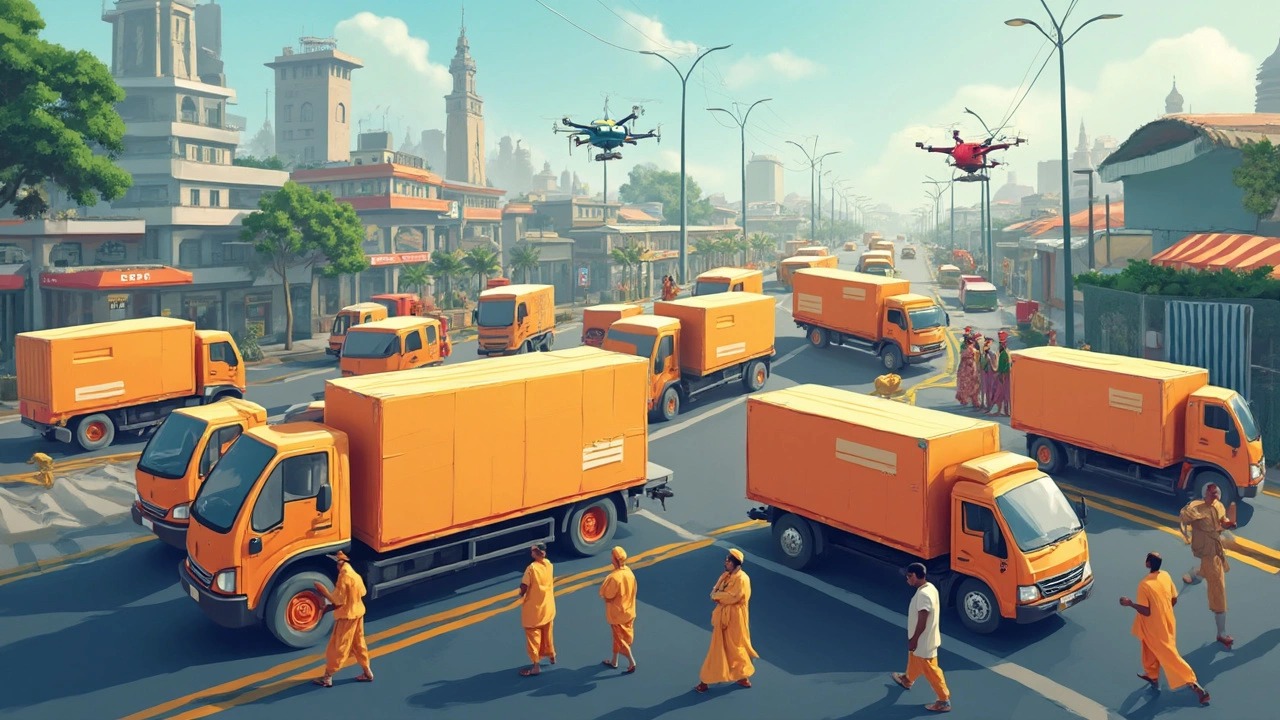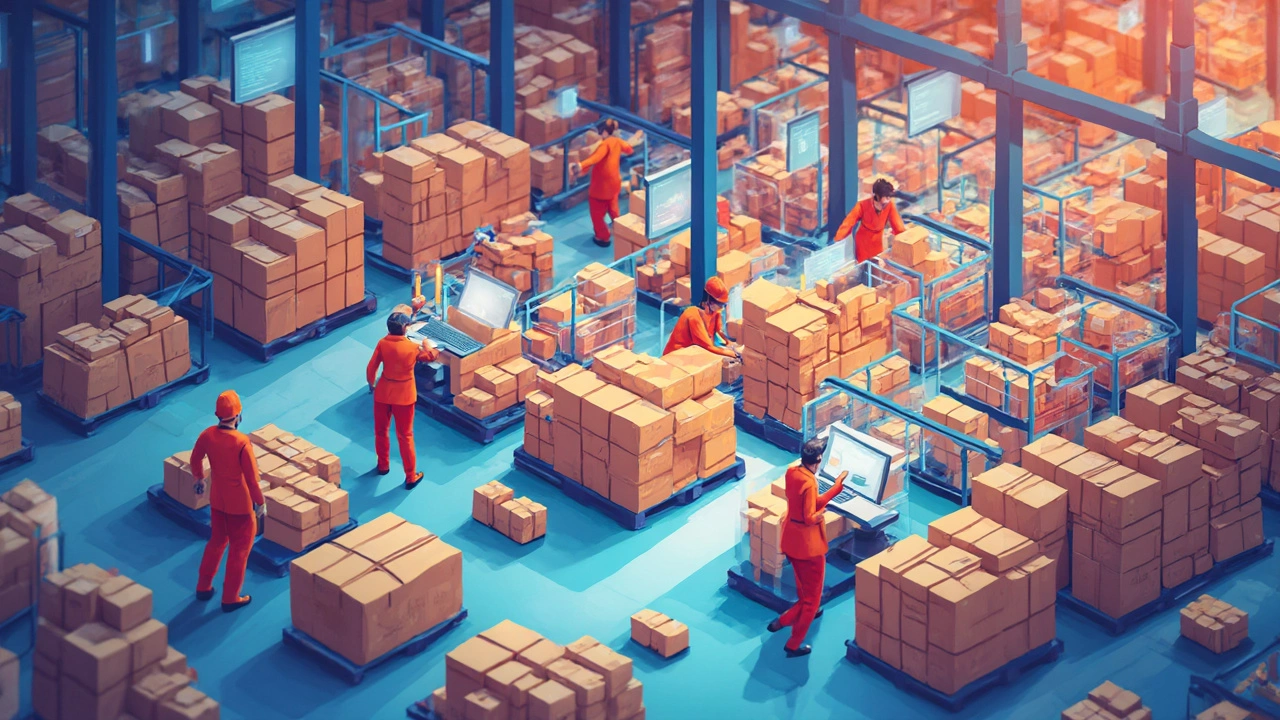E‑commerce Logistics Hub
If you run an online store, you already know that great products aren’t enough – you need a smooth logistics engine to move goods from your shelf to the customer’s door. This hub gathers the most useful guides, tricks, and industry facts to help you master every step of the e‑commerce supply chain.
Why Logistics Matters for Online Stores
Fast, reliable delivery turns browsers into buyers. A single delay can cost a sale and damage your brand reputation. That’s why e‑commerce logistics covers everything from warehouse layout to the last‑mile courier. Understanding the cost drivers, key performance indicators (KPIs), and technology options lets you price accurately, shrink delivery times, and keep customers happy.
Think of logistics as the backbone of your digital storefront. When the backbone is strong, you can scale up, enter new markets, and experiment with premium services like same‑day shipping without breaking the bank.
Featured Guides for E‑commerce Success
Below are the most popular articles that dive deep into specific logistics topics. Each piece is written in plain English and packed with actionable steps you can apply right away.
- What Is E‑commerce Delivery? Definition, Steps, Options, and Best Practices (2025 Guide) – A clear walkthrough of delivery types, cost factors, and KPIs you should track.
- What Does WMS Mean? Warehouse Management System Explained (2025 Guide) – Learn what a WMS does, how it differs from ERP, and when you need one.
- Most Reliable International Shipping Companies: Trusted Names and Real Results – Real‑world performance data to help you choose a global carrier.
- How Much Should I Get Paid Per Mile as a Delivery Driver? Rates, Tips, and Real Calculations – Understand driver pay structures so you can budget mileage costs correctly.
- Courier Package Explained: Everything You Need to Know About Courier Deliveries – Breaks down packaging standards, tracking updates, and common pitfalls.
- Warehouse Solution Explained: Key Features, Benefits, and How to Choose – A checklist for picking the right storage system for your e‑commerce volume.
- Courier Collection Services: How to Arrange a Courier to Collect Your Parcel & Save Time – Step‑by‑step on scheduling pickups and reducing manual handling.
- Proven Ways to Save Money on International Shipping in 2025 – Insider tricks that cut costs without sacrificing speed.
- SAP in Warehousing: Meaning, Role, and Real Benefits Explained – How SAP integrates with warehouse operations for larger brands.
- What Does a Logistics Company Do? Services, Key Roles & How They Operate – A quick guide to the services you can outsource.
Each article ends with a practical checklist, so you leave with clear next steps instead of vague ideas. Bookmark the ones that match your current challenge and start implementing the tips today.
Remember, the e‑commerce landscape moves fast. Regularly revisiting these guides keeps your logistics strategy fresh, helps you avoid hidden fees, and gives you the confidence to promise faster delivery times. Use this hub as your go‑to reference whenever you need a quick answer or a deep dive into a specific logistics problem.
Got a logistics question that isn’t covered here? Reach out to our team at StockOne Logistics – we love helping online businesses level up their supply chain.
Last Mile Delivery as a Service: How It Works and Why It Matters
This article explains what last mile delivery as a service really means, how it works, and why businesses are jumping on board. It digs into the challenges, cost factors, and the role of tech in making fast local deliveries possible. You'll find real-world examples, practical tips, and a breakdown of how this service can help both big e-commerce giants and smaller shops. By the end, you'll have a clear picture of why last mile delivery is changing how we get our packages. It's everything you need to know to stay ahead in the world of modern shipping.
Read MoreWho Uses Courier Services the Most? Surprising Real-World Trends
Wondering who uses courier services the most? This article breaks down which people and businesses rely on fast delivery the most and why. Get the facts on who’s really driving up those shipment numbers, with practical tips for anyone wanting to make the most out of courier services. We'll share surprising trends, clever industry hacks, and how customer habits are shaping deliveries in 2025. If you’re curious about who’s keeping the couriers zipping around town, this is for you.
Read MoreDo People in Logistics Make a Lot of Money? E-Commerce Salary Breakdown
Curious if a job in logistics pays well? This article breaks down exactly what people in e-commerce logistics make, which roles get top dollar, and where hidden opportunities lie. Learn which skills pump up your paycheck, plus real-world salary numbers. We’ll cut through industry hype and talk about real ways to make logistics more profitable for yourself. If you’re eyeing a career move or just want to know if you’re earning your worth, keep reading.
Read MoreE-Commerce Giant Amazon: The King of Online Shopping and Logistics
Amazon stands out as the most popular example of e-commerce, leading the pack not just with its massive product catalog but also with advanced logistics. This article explores why Amazon dominates the online marketplace, how its logistics work, and what makes its delivery system a benchmark for others. You’ll find insider facts about their supply chain and practical tips for sellers wanting to keep up. The article also covers why this matters for businesses and shoppers alike.
Read MoreE-commerce Explained: What It Is and Real-World Examples in Logistics
E-commerce means buying and selling goods or services online, but it's much more than clicking 'add to cart.' This article breaks down what e-commerce really is and how logistics makes the whole thing work. You'll see actual examples of e-commerce in action, plus smart tips for handling shipping and fulfillment. It's all about understanding how online orders get from web stores to your door. If you’re curious about how digital shopping works behind the scenes, you’ll get answers here.
Read MoreWhat is Logistics in Commerce?
Logistics in commerce isn’t just about moving things from one point to another; it’s the backbone of e-commerce. It involves managing resources, planning deliveries, and ensuring products reach customers efficiently. For businesses, understanding logistics means better customer satisfaction and operational success. From warehousing to last-mile delivery, each step is crucial in ensuring a seamless shopping experience.
Read MoreCracking the Code: The Three C's of E-commerce Logistics
Logistics is the backbone of e-commerce, focusing on seamless delivery and satisfied customers. The Three C's—Customer Satisfaction, Cost Efficiency, and Convenience—are crucial. Balancing these elements ensures a smooth operation, meeting customer expectations without inflating costs. Delving into each aspect reveals strategies to optimize logistics for better performance.
Read MoreHow E-Logistics Revolutionized E-Commerce
Discover how e-logistics has transformed e-commerce by enhancing supply chain efficiency, improving customer experience, and reducing operational costs. Learn about its key components, including order management, inventory tracking, and last-mile delivery. Explore the technologies and strategies driving the growth of e-logistics, such as AI, IoT, and blockchain. Understand the challenges faced by e-commerce businesses in optimizing logistics. Gain insights into the future trends shaping the industry.
Read MoreMost Popular E-commerce Company within Logistics
In the dynamic world of e-commerce logistics, one company consistently captures attention: Amazon. Known for its unrivaled distribution network and fast delivery, Amazon sets the bar high. Their continuous innovation in infrastructure and technology gives them a competitive edge. Discover how they've mastered logistics to maintain their market leader status.
Read MoreIs E-commerce and Online Selling the Same?
E-commerce and online selling often seem interchangeable, but they're not exactly the same. While e-commerce encompasses various online transactions, online selling strictly involves selling goods or services online. From logistics to customer interaction, both require unique strategies. Understanding their differences can optimize business approaches and enhance user experience. Explore how they align and differ through key aspects of logistics and marketing.
Read MoreE-commerce Logistics: What Sets Dropshipping Apart?
E-commerce and dropshipping may seem similar as both involve selling products online, but there are distinct differences in their logistics. While e-commerce typically requires managing inventory and shipping, dropshipping eliminates the need for storing products. Explore the unique aspects of these business models, understand their logistics intricacies, and discover tips for choosing the right one based on your business goals.
Read MoreUnderstanding the Difference Between Logistics and E-Logistics
Logistics and e-logistics play crucial roles in the supply chain, but they differ in their approach to managing goods. Logistics traditionally focuses on the physical transportation of goods, while e-logistics incorporates digital tools to streamline online commerce. As e-commerce continues to grow, understanding how these two systems work can boost efficiency and customer satisfaction. Explore the distinctions and benefits of adopting e-logistics for your business.
Read More










